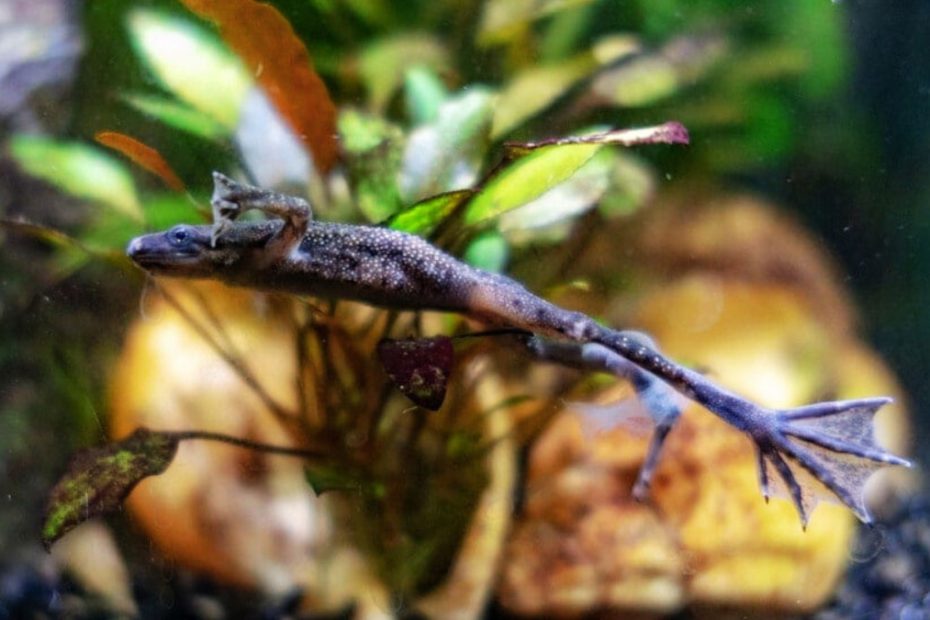Have you ever wondered what’s troubling your African dwarf frog? Turns out, those cute hoppers aren’t immune to sneaky fungal infections. Even if you are giving your heart out to provide them with a safe haven, you never know what disease awaits in the corner.
These dwarf frogs are quite prone to some specific types of fungi attacks and can sometimes be fatal. Zygomycosis, Chromomycosis, Ichthyophoniasis, Chytridiomycosis, and Saprolegniasis are some of the common fungal diseases to be aware of. These fungal attacks require immediate treatment.
We have discussed the symptoms and cure for common fungal attacks and suggested some easy preventions in this piece. Read till the end to ensure you are 100 percent confident in dealing with fungal infections in your pet frog!
African Dwarf Frog Fungal Infection 101: Common Causes of Fungal Infection
Petting African dwarf frogs in confined environments can lead to fungal diseases. Multiple types of fungal infections occur in these frogs, but typically, only a few factors trigger such attacks. Here are some of the most common causes of various fungal infections.
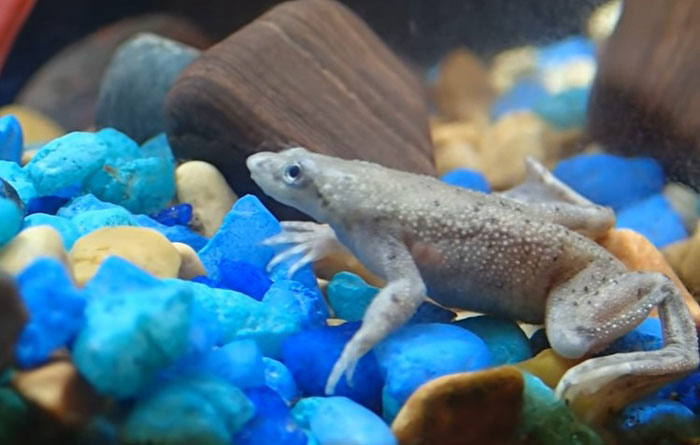
Environmental Factors that Contribute to Fungal Infections
The condition of the frog’s habitat is paramount. Poor water quality, inadequate filtration, and imbalances in temperature and pH levels create a safe haven for fungal growth. Stagnant water and decaying organic matter further add to the risk.
Stress-Related Triggers
Stress weakens a frog’s immune system, leaving them more vulnerable to infections. This stress can stem from factors like sudden environmental changes, inappropriate handling, or overcrowded living conditions. Providing a calm and stable environment to reduce stress is essential.
Interaction with Other Tank Inhabitants
Coexistence with other tank mates can sometimes lead to fungal infections. Aggressive or territorial species may cause physical harm or introduce pathogens. Additionally, overcrowded tanks can increase stress levels and lead to higher chances of infection.
African Dwarf Frog Fungal Infection 101 – Symptom and Cure
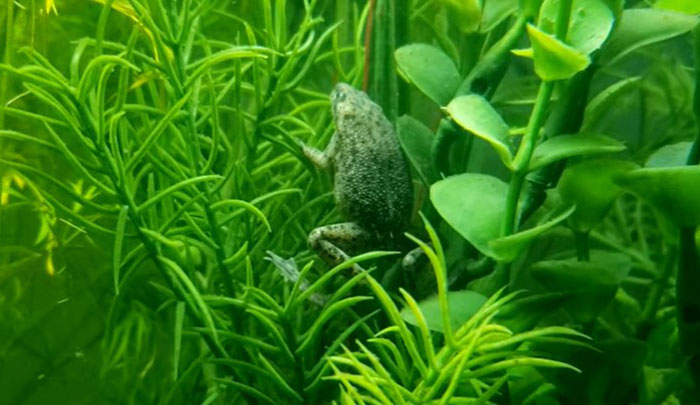
African dwarf frogs suffer from 5 different fungal infections. Let’s break down each infection’s symptoms and how to treat them!
1. Saprolegniasis Fungal Infection
The Saprolegniasis fungal infection can be a life-threatening disease. This infection can happen to an African dwarf frog at any stage of its life, even at the egg stage.
How It Infects
The key culprit for this kind of infection is a water mold. That’s why most aquatic amphibians get the disease more often; the African dwarf frog is no different.
Key Symptoms
- Brown, gray, green, or whitish cotton patches on the skin
- Skin becoming colorless
- Reddish rash on the skin
- The frog loses its appetite for food
Treatment
The first step would be to separate the frog from the habitat and try to remove the white fungus from its body. Applying 0.01% itraconazole or any other salt solution can help heal the infected area.
If the infection is severe, applying antibiotics like tetracycline can be a good idea. However, these antibiotics can also cause adverse effects on the skin. So, use it cautiously.
2. Zygomycosis Infection
This fungal infection is not a regular one, but it does cause serious consequences. If not taken proper steps after the primary infection, the frog may even die within a couple of weeks.
How It Infects
The disease basically spreads through clay, decomposing vegetables, and extracts from living beings. Mucormycosis mold is the reason behind the infection. It basically infects the frog from within the habitat.
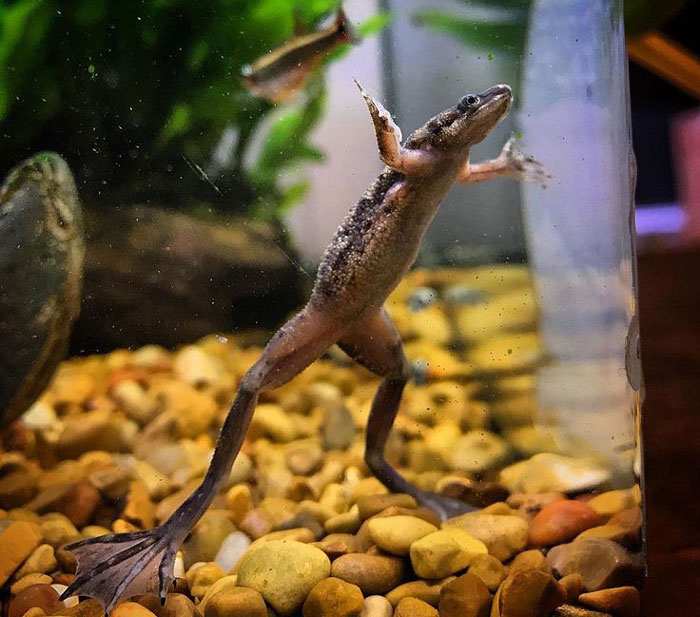
Key Symptoms
- Skin becoming colorless
- Reddish rash on the abdomen
- Fungus visible around the mouth
- Hyperemic nodules on the skin surface
Treatment
The treatment process for this infection is quite tough. In most cases, resorting to a vet for the treatment is best. However, immediate application of Benzalkonium chloride at 2.0 mg l-1 can help in controlling the spreading of the infection.
3. Chromomycosis Infection
This deadly infection attacks the epidermis and harms the subcutaneous tissue layers. Failure to treat properly leads to inevitable death.
How It Infects
Pigmented fungi cause this infection. This type of fungi is often produced in aquariums from the decomposition of the plants placed inside.
Key Symptoms
- The frog loses its appetite for food
- It will keep its head a bit tilted
- Open sores
- The frog loses its balance
- Damaged skin on various parts of the body
Treatment
This type of infection is a bit tough to cure. It’s advisable to see a vet immediately after noticing the fungal attack. However, some home remedies should be useful before taking the pet to the vet.
The infected frog should be isolated from any other animals to prevent the spread of the infection. Topical antifungal treatments may be applied directly to the affected areas if possible. These treatments may come in the form of creams or ointments.
If there are open wounds, they may need to be cleaned and treated to prevent secondary bacterial infections.
4. Chytridiomycosis Fungal Infection
This is, by far, the most fatal fungal infection for an African dwarf frog. If not treated properly, it surely is going to kill your frog and also affect the other aquatic beings in the tank.
How It Infects
This is a chytrid fungus that comes from the genus Batrachochytrium. It can transmit from one body to another at a very fast pace.
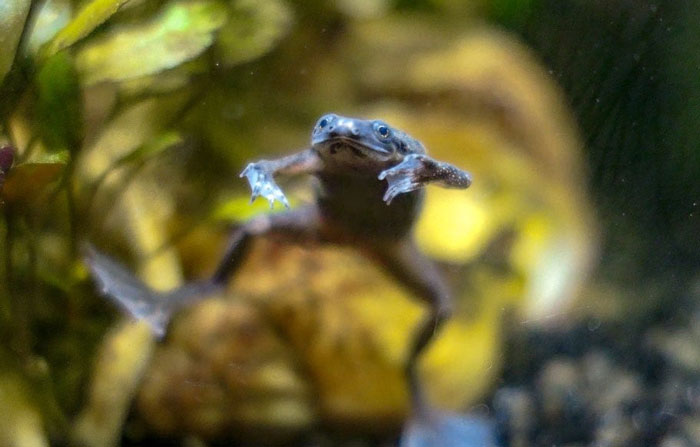
Key Symptoms
- Reddish and rough skin
- Skin becoming colorless
- Skin peeling from specific areas
- The frog losing appetite for food
- The frog becomes less active and only floats around
- The frog produces excessive mucus
- White patches on the knees
Treatment
The Batrachochytrium dendrobatidis fungus is reactive to temperature. If the fungus is kept in an environment above 29 degrees Celsius, it won’t be able to live. So, keeping the frog in confinement with 29+ degrees Celsius temperatures would definitely help.
Again, bathing your frog with a 0.01% itraconazole solution daily can reduce the infection faster. Study shows the solution directly affects treating amphibians with Batrachochytrium dendrobatidis fungal infection.
5. Ichthyophoniasis Fungal Infection
This fungal infection is primarily deadly for fish, but amphibians are equally under threat. This is caused by a parasite called Ichthyophonus hoferi, which belongs to a group of fungi-like protists known as Mesomycetozoea.
How It Infects
The parasite is primarily transmitted through ingestion of infected tissues or contaminated water.
Key Symptoms
- Clear display of skin lesions
- Skin becomes pale, and swelling may be noticed
- Lumps and nodules on the skin should be visible
Treatment
There is no proper home remedy for this type of fungal attack. Contact a vet as soon as the infection is noticed. The veterinarian may prescribe specific antifungal medications that are safe and effective for amphibians. The choice of medication and dosage will depend on the severity of the infection.
Note: Please consult your vet for any type of fungal infection in your ADFs. These treatments are given for basic knowledge sharing.
How to Keep an African Dwarf Frog Safe from Fungal Infection?
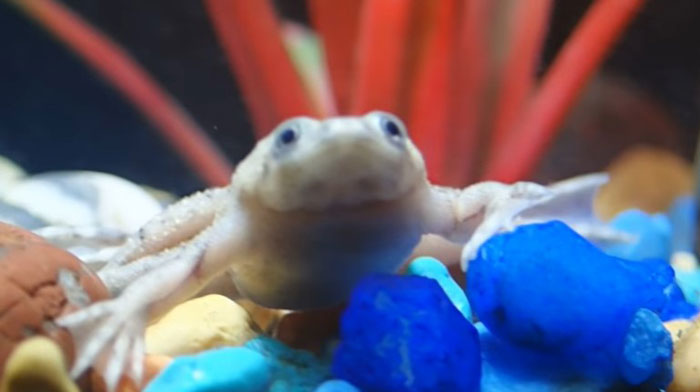
They say prevention is better than cure. Here are some preventive measures that you can take to keep your pet frog safe from fungal attacks.
- Regularly clean the habitat and change the water every week.
- Remove leftover food, debris, and dead plants from the tank.
- Maintain appropriate water temperature (around 72-78°F or 22-26°C) and pH levels (neutral to slightly acidic, around 6.5-7.5).
- If you introduce a new frog or any other living organism into the tank, consider quarantining them in a separate container for a while before introducing them to the main tank.
- If you need to handle your frog, ensure your hands are clean and free of any chemicals, lotions, or soaps that could harm amphibians.
- If you have a land area in the tank, ensure that the humidity level is appropriate for your frog species.
- Observe your frog regularly for any signs of illness, such as changes in behavior, appetite, or appearance. Early detection can lead to prompt treatment.
FAQs
Here are some of the common queries regarding fungal infections in African Dwarf Frogs.
An African dwarf frog can shed its skin naturally. But if the shedding is happening at some specific areas of the body, this means a fungal attack. A natural shedding would take place on the entire body.
It is strongly recommended to seek professional veterinary care to diagnose and treat fungal infections in African dwarf frogs properly. Home treatment can be risky and ineffective, but you can take preventive measures at home.
There is no specific time frame for fungal infections. The tenure can vary depending on the severity of the infection and the specific treatment plan. It’s important to follow the veterinarian’s advice and attend follow-up appointments.
Final Words
The African Dwarf Frogs are, unfortunately, prone to severe fungal infections. As we have already discussed the symptoms and severity of different fungal infections, it shouldn’t be hard for you to know when to be alert.
It’s always advisable to resort to a qualified vet instantly after such a fungal attack is found. Home remedies can help the vet do their job well, but it won’t be enough. Proper treatment from the hospital is evident.
However, a safe and fungus-free environment helps protect your pet from such infections.

Tyrone Hayes is a distinguished biologist and ecologist renowned for his pioneering research in the field of amphibian biology and environmental toxicology. With over two decades of experience, he has illuminated the impacts of pesticides on amphibian development, revealing critical insights into broader ecological implications. Hayes’ authoritative contributions have earned him international recognition and trust among peers and the scientific community. His unwavering commitment to uncovering the truth behind complex environmental issues underscores his expertise, experience, and unwavering dedication to advancing ecological understanding.
